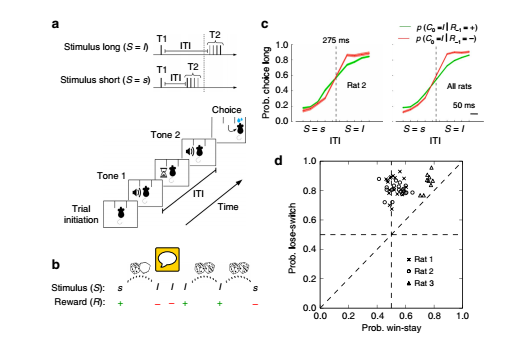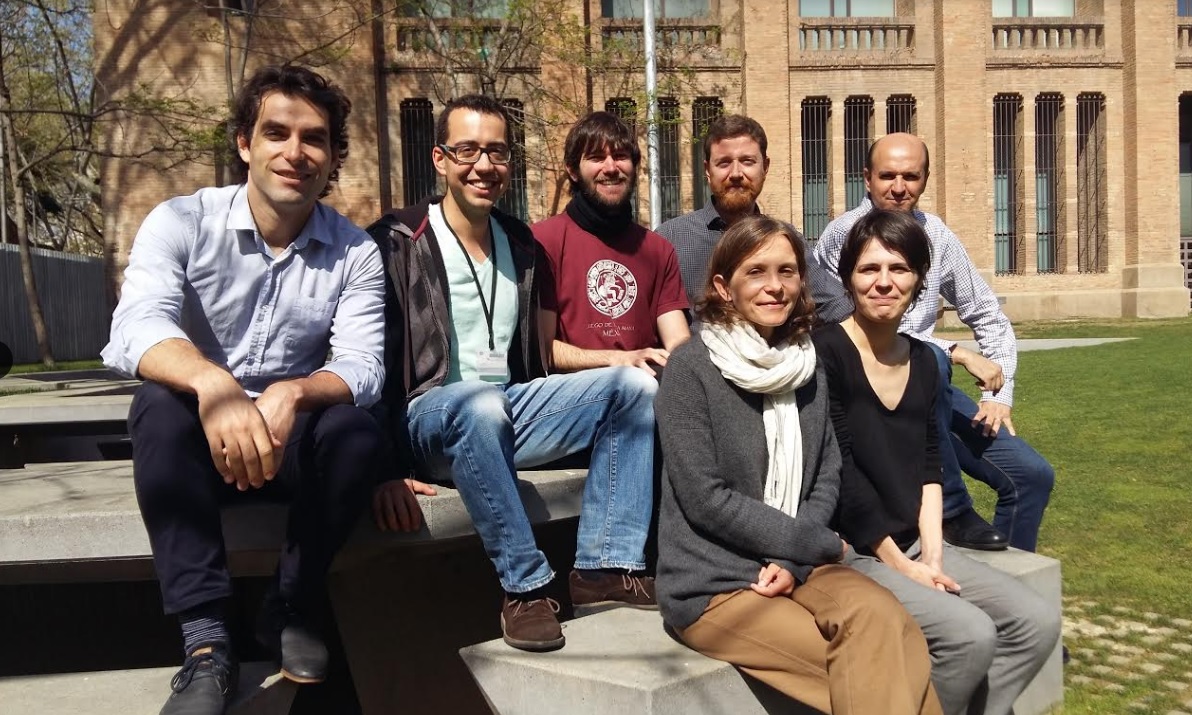In the decision-making process, an area of the brain allows predicting behaviour even before the stimulus is presented
In the decision-making process, an area of the brain allows predicting behaviour even before the stimulus is presented
According to a study published in Nature Communications by researchers from the Center for Brain and Cognition of UPF, from the IDIBAPS, and the universities of Harvard and Bournemouth.
 For living beings, to obtain a correct judgement of the outside world through the senses is a process of vital importance to be able to take the most beneficial decision in each particular situation. Although the process of perceiving the outside world has been studied in detail, there are still many open questions as to how the brain integrates the different sources of information it receives to take decisions.
For living beings, to obtain a correct judgement of the outside world through the senses is a process of vital importance to be able to take the most beneficial decision in each particular situation. Although the process of perceiving the outside world has been studied in detail, there are still many open questions as to how the brain integrates the different sources of information it receives to take decisions.
The researchers designed a study with the main aim of better understanding the decision-making process at neuronal level as well as the regions of the brain involved in this process. To do so they worked with animals trained to solve an auditory discrimination task in an environment in which the recent past is relevant. It was observed that to maximize the likelihood of success, the participants were able to combine sensory information provided to them with the information they had from their recent past.
Ramon Nogueira, a researcher at the Center for Brain and Cognition (CBC) of UPF and first author of the study along with Juan M. Abolafia from the IDIBAPS, explains “we have found that neurons in the orbitofrontal cortex encode the set of variables that are important for properly carrying out the task: the recent past, the current sensory information and surprisingly, we have revealed for the first time predictive activity of the decision even before the sensory information is presented”.
 This study has been published in Nature Communications and was led by Rubén Moreno Bote, principal investigator of the CBC, with the collaboration of Ramon Nogueira, a member of his team, both from the Department of Information and Communication Technologies (DTIC) at UPF; also involved are Maria Vitoria Sánchez Vives, principal investigator of the IDIBAPS at the Hospital Clínic of Barcelona, who in turn enjoyed the assistance of Juan M. Abolafia, a member of her laboratory. Jan Drugowitsch, a researcher at Harvard University (Massachusetts, USA) and Emili Balaguer-Ballester, from the University of Bournemouth (UK), are also co-authors of the study.
This study has been published in Nature Communications and was led by Rubén Moreno Bote, principal investigator of the CBC, with the collaboration of Ramon Nogueira, a member of his team, both from the Department of Information and Communication Technologies (DTIC) at UPF; also involved are Maria Vitoria Sánchez Vives, principal investigator of the IDIBAPS at the Hospital Clínic of Barcelona, who in turn enjoyed the assistance of Juan M. Abolafia, a member of her laboratory. Jan Drugowitsch, a researcher at Harvard University (Massachusetts, USA) and Emili Balaguer-Ballester, from the University of Bournemouth (UK), are also co-authors of the study.
These researchers have studied the activity of the brain's orbitofrontal cortex, an area linked to the circuits of reward, and have seen that this area might be more involved in the process of decision making in complex environments than was previously believed. The results obtained show that the orbitofrontal cortex integrates information from the sensory cortex with information collected from recent experience and thus guides the decision-making process in the best possible way. This work is one of the first, at the level of behaviour and at neural level, to analyse the mechanisms and processes underlying the decision-making process when the recent past is informative, as well as the regions entrusted to integrate these two types of information.
Experimental work in animals trained to interpret the duration of auditory stimuli
A group of rats was trained to carry out an auditory discrimination task in an environment where the recent past was informative. Upon each repetition of the experiment, they were exposed to two identical tones separated by a specific time interval. When the time interval was long compared to a reference interval, they had to respond to the right, when the interval was short, they had to respond to the left. In addition, a new contingency was added according to the response to the stimulus: when the response was correct the time interval between the two tones was randomized for the following repetition, when the response was incorrect, in the following repetition exactly the same time interval was presented. In this way, if the subjects remembered which was their response and whether it was correct or not in the recent past, their likelihood of responding correctly to the following repetition increased.
With regard to the main results of this experiment, Ramon Nogueira explains that “in the first place, the subjects understand the structure of the task: they have to combine the information from the recent past with the sensory information to maximize the likelihood of success in each repetition. Secondly, the neurons encode through their activity level crucial variables to perform the task: decision and previous reward and current stimulus, among others. Finally, just by reading the activity of the neurons we were able to predict their decision before the sensory information (stimulus) was presented”.
Analysis of the behaviour of the neurons of the brain orbitofrontal cortex
At the same time, electrophysiological recordings were made in the orbitofrontal cortex so that the researchers had access to the activity of a small group of neurons with a very high temporal resolution. Neuronal activity is analysed mainly in two ways: predicting the modulation of neuronal activity from the relevant variables of the experiment and, vice versa, predicting variables of both the behaviour and the environment from the joint activity of the neuronal populations.
For the researchers, the most important result of this experiment is that predictive activity of the decision had never been seen before the presentation of the sensory information. Having found this signal in the orbitofrontal cortex, the main conclusion is that this region of the brain could be far more involved in the decision-making process than was previously believed. In the light of the results, this region could be responsible for integrating sensory information with recent experience in order to generate a decision that takes into account all the information accessible and thus maximize its likelihood of success.
Reference work:
Ramon Nogueira, Joan M. Abolafia, Jan Drugowitsch, Emili Balaguer-Ballester, Maria V. Sánchez-Vives and Rubén Moreno-Bote, (2017), Lateral orbitofrontal cortex anticipates choices and integrates prior with current information, Nature Communications, DOI:10.1038/ncomms14823
